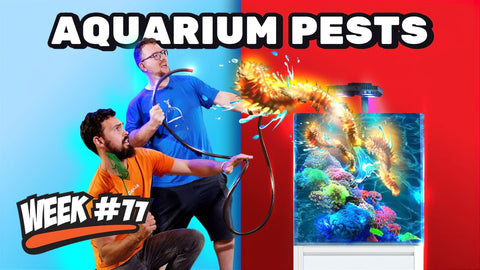Best Starter Corals For Your Reef Tank | 12 Week Reef Video Tutorial #8
Week 8: Adding Corals, Acclimation, and Nutrient Control
In Week 8 of our 12-week reef journey, we’re diving into starting a reef tank by adding a variety of corals! But before introducing these new additions, we’ll need to make sure the tank’s levels are optimized. Accurate dosing and nutrient control are essential in preparing your tank to support coral growth. With help from the team at Sustainable Reefs, we’ll explore the best setup for food for corals and learn why coral essentials is a must for reef tank success.
Preparing for Corals: Setting Parameters Right
In last week’s video, we installed the ekoral dosing pump, which maintains helps maintains constant levels of calcium, alkalinity, and magnesium. We learned that even with just a clean-up crew and one fish, these elements are being used up. After consulting the coral essentials calculator, we programmed the dosing pump to hit the ideal ranges. With stable parameters, Sustainable Reefs and Shane Danger gifted us a starter coral, promising even more if we kept levels on target.
Throughout the week, testing became routine, confirming that we’re achieving stable, healthy water chemistry for our growing reef. As soon as our parameters were right, we received a full “swag pack” of sustainably farmed corals! For anyone serious about choosing the best corals to start with, investing time in testing and dosing is the foundation of success.
Coral Acclimation: A Key to Coral Health
When starting a reef tank with live coral, acclimating is a crucial step. Acclimation allows coral to adjust to the tank environment slowly, avoiding shock. With Shane’s guidance, we prepared a glass acclimation box to introduce each coral to its new habitat gently. He also shared tips on coral placement, discussing where each type of coral is naturally found and the realistic environment we should aim to create in a home aquarium.
After acclimating, we placed the corals strategically within the tank. Each coral type has unique requirements; thus, where you place them can influence both their color and growth rate. Coral essentials ensures the right food for corals through its dosing pump, and with additional testing, it’ll help maintain optimal conditions.
Nutrient Control and Maintaining Balance
As our reef develops, managing nutrients becomes a focus. Adding more coral increases the consumption rate of calcium, alkalinity, and magnesium while also impacting nitrate and phosphate levels. Shane explained that nutrient balance is essential to prevent corals from browning or bleaching. Regular nutrient testing will help maintain a steady balance, keeping your corals healthy and vibrant.
Week 8 Recap: Stability Rewards
This week, we tested daily to ensure perfect stability, and the results are worth it: a vibrant collection of sustainably farmed corals now brightens the tank. Through steady testing, acclimating techniques, and nutrient control, we’re on the path to a thriving reef. As the tank settles, it’s essential to monitor consumption rates and adjust dosing as coral demand grows.
Stay tuned for next week as we continue exploring the essentials of starting a reef tank—we’re diving into new levels of tank care for all the fish enthusiasts!





